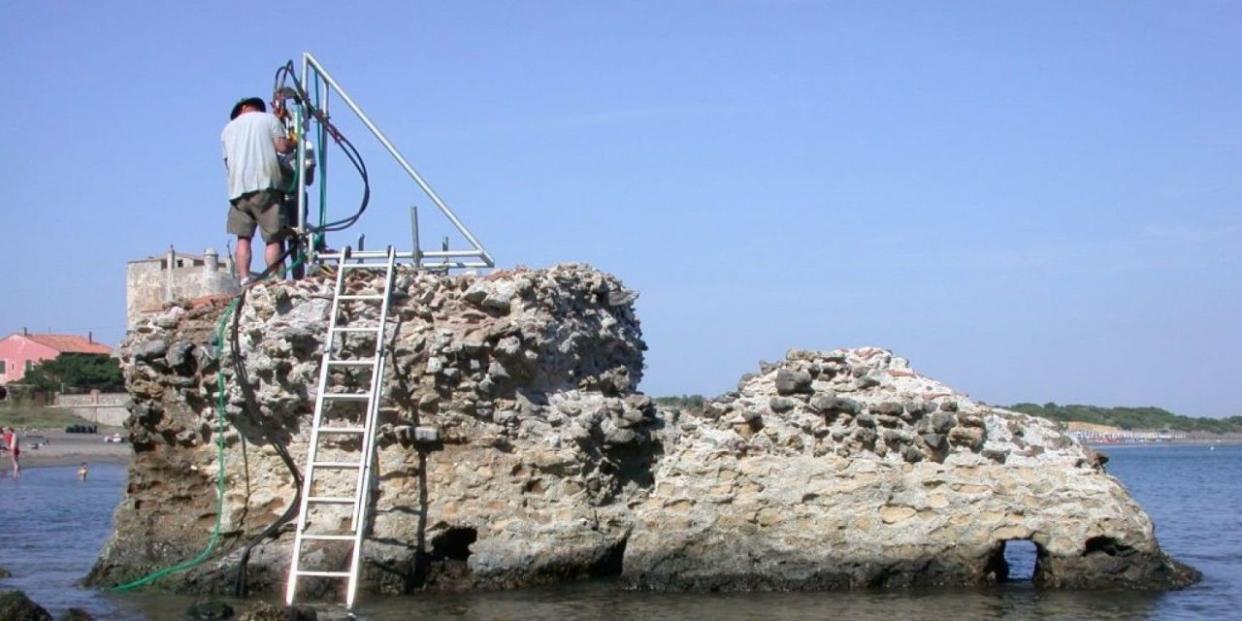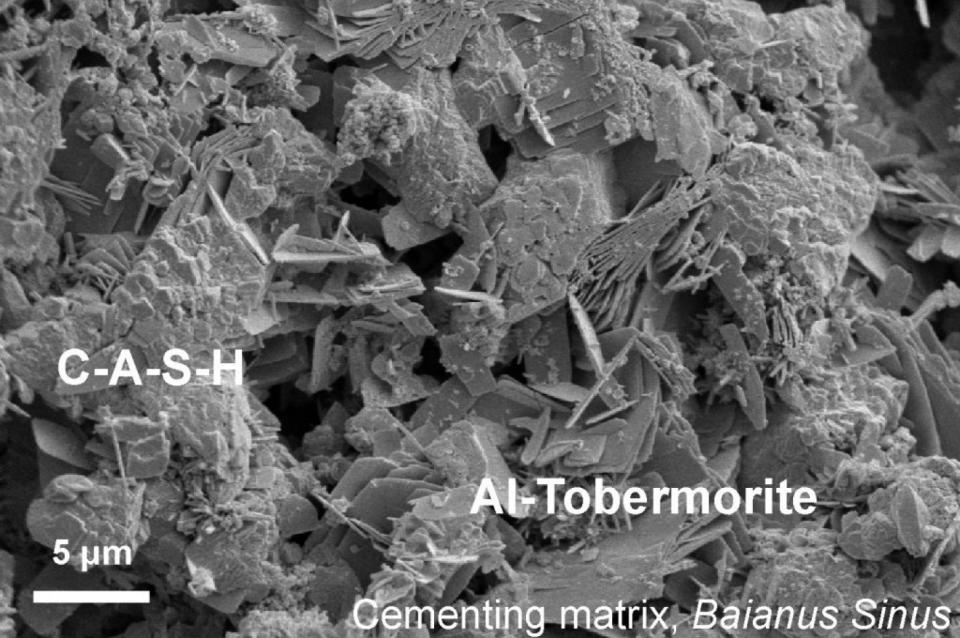The Ancient Romans' Concrete Recipe Could Help Us Beat Back Rising Seas

(Image: Drilling out a sample of an ancient Roman concrete structure in Portus Cosanus, Tuscany, in 2003.)
Ancient Roman concrete was more durable than any developed before or since. "It's the most durable building material in human history," Philip Brune, a researcher at DuPont Pioneer who studies the engineering of ancient Roman monuments, told the Washington Post. "And I say that as an engineer not prone to hyperbole."
Indeed, academics study the properties and chemical mixture of the concrete, which was made with volcanic ash found in Italy and is particularly well suited to marine structures. Now some researchers are wondering if the secrets of this ancient building material could help us adapt to a world of rising seas.
As global temperatures rise, sea ice is melting and causing the sea level to rise at a faster rate than during the 1900s. Exactly how much it will rise is dependent on a number of variables, but there is a high likelihood that rising sea levels will force us to reinforce infrastructure around coastal cities. Venice is already sinking.
One of the most direct solutions for a coastal city is to construct a seawall. These structures do not need to hold back the ocean constantly, but rather are built to block the water from the city during high tide and storms that can cause flooding. The Malecón in Havana, Cuba, for example, is a five-mile-long roadway and seawall that guards the infrastructure of the city. Seawalls are used around the world in countries like the United Kingdom and Australia.
It turns out the ancient Romans had the perfect recipe for water-resistant concrete. The material, called opus caementicium by the Romans, is made from a hydraulic cement, meaning it can set underwater or in wet conditions. The Romans mixed this cement with volcanic ash found in regions around modern Naples. The volcanic ash added a mineral called phillipsite to the concrete, and a study published Monday in the American Mineralogist reveals that aluminous tobermorite crystals grow in the Roman concrete when it is exposed to water. These crystals, the scientists believe, could provide the structural reinforcement that makes Roman concrete so durable.

Between 22 and 10 BCE, the Romans constructed an underwater concrete foundation for the harbor of the ancient city of Caesarea in what is now Israel. These marine structures are still intact today, more than two millennia later. Researchers studying ancient Roman concrete suggest the material could be imitated with modern resources to build seawalls around cities at risk of flooding from the ocean.
Marie Jackson, an archeologist with the University of Utah, is attempting to recreate this type of concrete using volcanic rocks found in the ocean around San Francisco. She notes that artificially producing aluminous tobermorite requires a large amount of heat and energy simply to synthesize a small amount. If we hope to add this material to modern concrete, it will likely be more cost efficient to harvest it from the natural source of heat and energy where it forms: volcanoes.
If cities around the world are forced to build seawalls due to rising oceans, a version of Roman concrete could provide an alternative to steel structures. This enduring concrete only hardens and becomes more durable as it is exposed to the saltwater of the sea.
Pliny the Elder, the famed Roman author, historian, and philosopher, once wrote an ode to concrete. "As soon as it comes into contact with the waves of the sea and is submerged becomes a single stone mass, impregnable to the waves." With the waves rising around us, we could have more need for this concrete than ever before.
Source: The Washington Post
You Might Also Like

